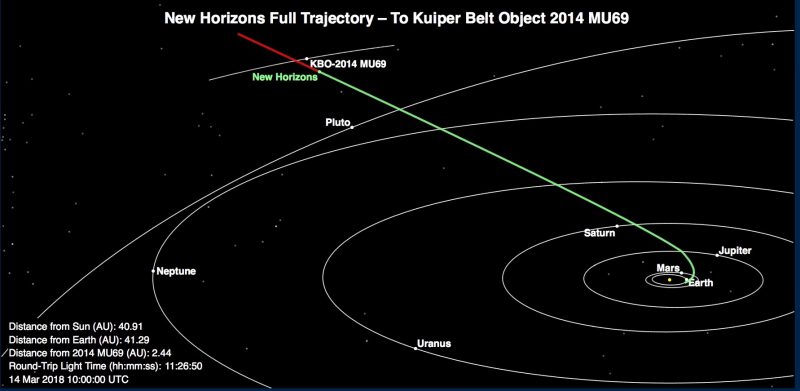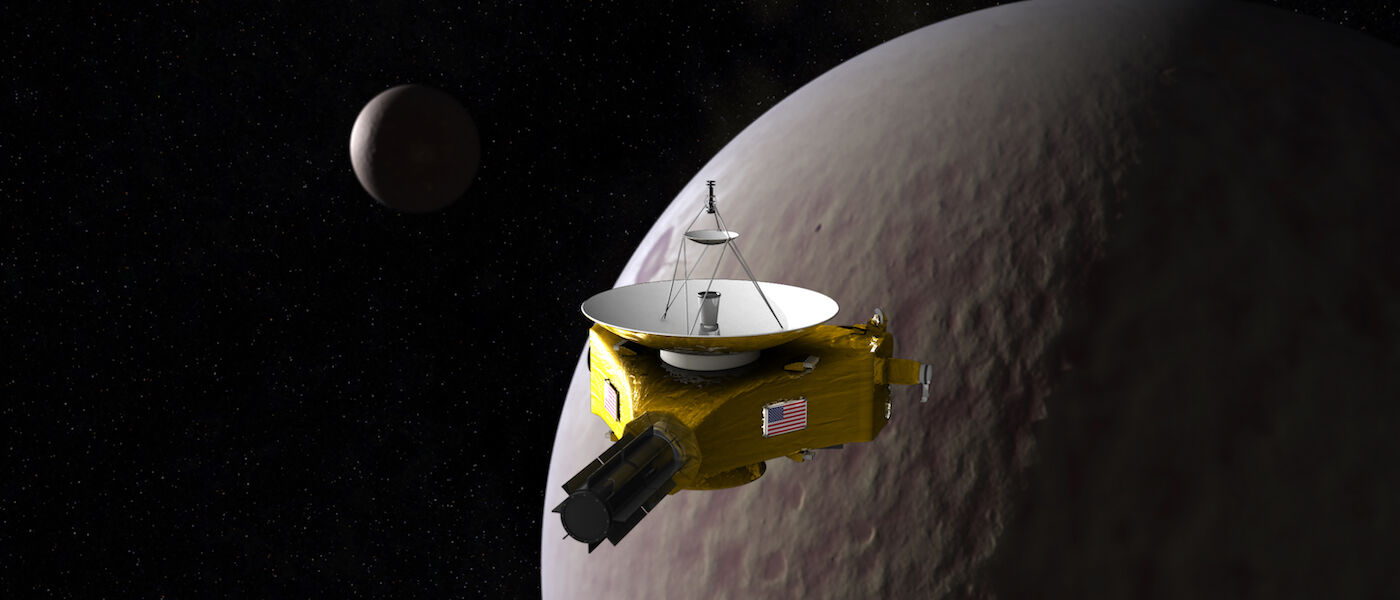This week in the planetarium: an icy journey past Pluto's orbit!
As hundreds of thousands of people celebrate the New Year in Times Square and up and down the East Coast a plucky robot will blaze a new trail for science in a much colder and darker place!
At 12:33 am on Jan. 1, 2019 EST, NASA’s New Horizons spacecraft will fly past Ultima Thule (also known as KBO-2014 MU69), a small, icy world far past the orbit of Pluto. Ultima Thule, four billion miles from the Sun, will be the most distant and the most primitive world ever explored by a mission from Earth.
This visit will provide new insight into the makeup of the Kuiper belt, that realm of hundreds of thousands of small cold worlds beyond Neptune’s orbit.

The story of the Kuiper belt and of Ultima Thule is closely tied to the story of Pluto.
When New Horizons was launched in January 2006 on a 9.5-year flight to Pluto, Pluto was still considered one of the nine planets of the solar system.
Yet that summer of 2006, the International Astronomical Union (IAU) famously reclassified Pluto as a "dwarf planet." Why? In large part because, earlier in that same decade, a number of other Pluto-sized objects were being found in that same region beyond Neptune, three billion or so miles from the Sun. The discovery of the planet Eris was announced in 2005. In the same mid-2000s period, the small planets Haumea and Makemake were also discovered in the Kuiper belt.

As more of these minor planets were discovered, in the same general size range as Pluto, the IAU realized that we could potentially have many, many planets in our solar system unless there was another way to classify these smaller bodies. Pluto was reclassified as a dwarf planet, grouped with these other, smaller objects of the solar system.
New Horizons flew past Pluto on July 14, 2015, the first spacecraft to reach that distant world. From that one encounter, our grasp of Pluto evolved from a fuzzy ball to a world seen in crystal clarity, from its icy heart-shaped plain to its reddish highlands.

In the midst of New Horizon’s long flight to Pluto, scientists using the Hubble Space Telescope discovered Ultima Thule, designating it "KBO-2014 MU69" at the time of discovery.
Fifteen months later, after New Horizons had passed Pluto, this little world was designated as the next and final destination for New Horizons, and small course corrections were then made to make the encounter possible. This makes Ultima Thule the first world to be discovered only after the launch of the mission that will explore it!
There are challenges to this mission. While no rings or moons have been discovered around Ultima Thule yet, there is always the possibility of a small orbiting object that could potentially damage the spacecraft as it zips by at 31,500 mph.
But the rewards will be great, allowing us to view a minor body of the Kuiper belt in detail, and to try to analyze its makeup, the reasons for its dark reddish color, and other intriguing details.
Interested in learning more? We're covering this breaking news story all week in the Jennifer Chalsty Planetarium, the biggest planetarium in the Western Hemisphere. Experience it in our all-live show, "Wonders of the Night Sky." Click here to get showtimes and see a full list of what's playing in the planetarium.
